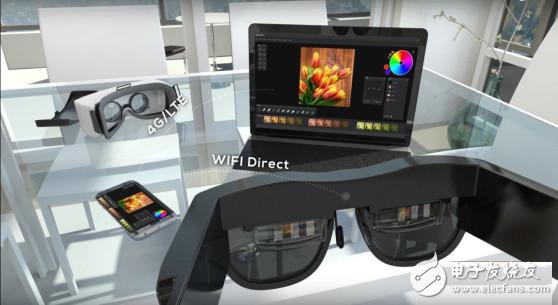Although the S8 will not appear, Samsung has prepared another surprise for Barcelona's World Mobile Congress. Everyone knows that Samsung has a Creative Lab (C-Lab) for employees to be creative when they are fine. This time Samsung will show some from Creative Lab's VR project, including AR glasses Monitorless.
Monitorless, as the name implies, replaces all screens with glasses. You can use apps and even games through it. It also has VR mode and AR mode to choose from.
Another showcase project is VuildUs, which includes a 360-degree depth camera and an app. First you need to scan your home with a camera, then generate a VR version, then you can decorate your virtual home with the app, the app has Purchase function.

And a Gear VR app Relúm?no (somewhat strange name), so that visually impaired users can watch TV and read like ordinary people, it can improve visual effects, avoid blind spots, adjust picture position, correct picture distortion.
Finally, a virtual travel app called traVRer is basically a 360-degree video platform, similar to Google Street View, but it is a VR version. Lee Jae, deputy director of C-Lab, said, “The creative lab's work demonstrates the infinite creativity of our employees and the possibilities of VR and panoramic video.â€
1. Why fiberglass antenna is not suitable for indoor use? A: Many people may have noticed that international brands such as Linksys or DLink typically use only 7dB, 5dB and 2dB antennas, while 9dB or higher gain indoor omnidirectional antennas are rarely seen in the market. As far as we know, the 7dB antenna has fully met the requirements of indoor use. The antenna above 7dB has been used. Due to the small Angle, it cannot give full play to its advantages. Therefore, we recommend using an omnidirectional antenna above 9dB for outdoor use. As for someone, it is good to say indoor wall effect, this statement is unable to prove, also need not believe too much. 2. Why are omnidirectional antennas and perpendicular angles called? A: Generally speaking, an omnidirectional antenna is an antenna with a horizontal radiation Angle of 360 degrees and a vertical sector. The Angle is usually around 6 ~ 15 degrees. The higher the gain, the smaller the vertical Angle. For example, the radiation Angle of the 9dB antenna can be about 14 degrees, while the radiation Angle of the FRP antenna can be about 8 degrees as the limit
868MHZ Fiber Glass Antenna ,915MHZ Fiber Glass Antenna ,LoRa Gateway Antenna ,Wifi Antenna ,Fiber Glass Antenna
Yetnorson Antenna Co., Ltd. , https://www.yetnorson.com